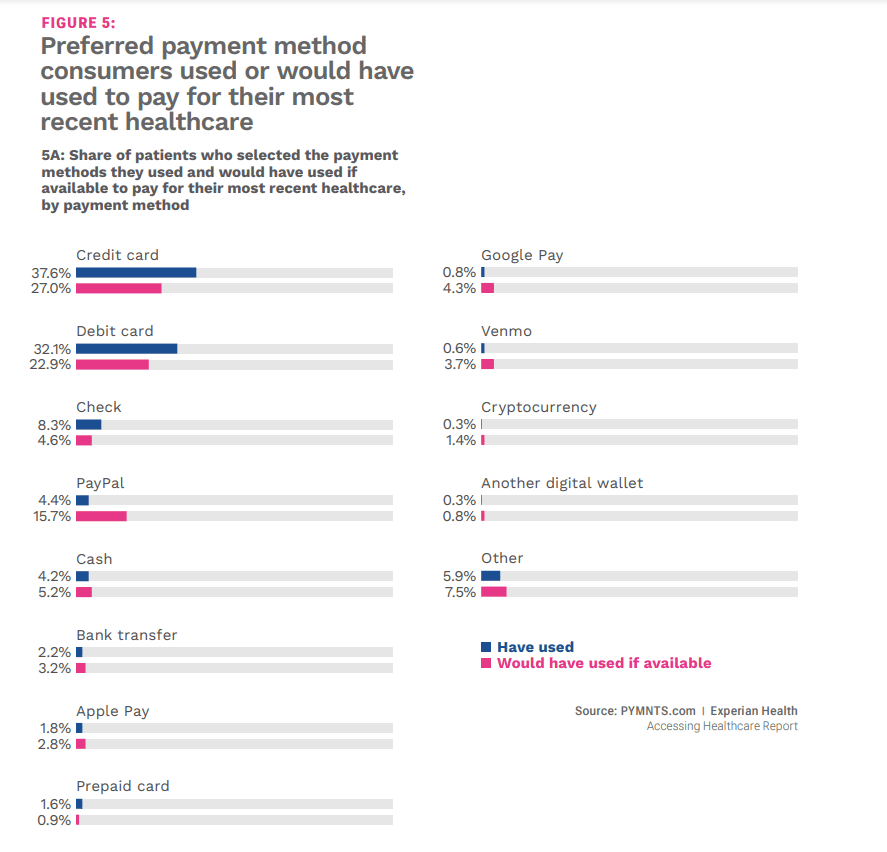More Consumers Use Digital Wallets for Healthcare Expenses
Healthcare providers may consider increasing digital wallet acceptance as patients increasingly opt for the payment method.
The latest PYMNTS/ACI Worldwide collaboration, “The Mobile Wallet Challenge: Replacing Physical With Digital,” tracks the current share of consumers using a mobile wallet to pay select bills.

However, that figure alone doesn’t tell the whole story. Previous PYMNTS studies on digital wallet adoption demonstrate this upward trend of consumers using mobile wallets to pay their healthcare-related bills.
The rate of consumers using mobile wallets to pay healthcare costs was at its lowest in March 2022, per PYMNTS’ “Accessing Healthcare” report.

A few months later, the July 2022 “The Connected Economy™” report noted an uptick in consumers using digital wallet options, both online and in-person. For healthcare bills paid digitally between Q1 and Q2, although Apple Pay use remained flat, Google Pay use rose 2.9% and Samsung Pay climbed 1.2%. For in-person bills, Samsung Pay and Google Pay also saw small gains.
The rise of mobile wallet use for healthcare-related payments appears on track to continue, as nearly half of surveyed consumers have used the method to pay for at least one of their bills within the previous 12 months. Given this predicted growth, providers may want to prioritize mobile wallets as a payment choice to get ahead of the digital curve.
There are added benefits for healthcare providers accepting digital wallet payments as well. One is the possible reduction of personnel hours spent on legacy efforts such as paper receipts. In an interview with PYMNTS’ Karen Webster, Elmahdi Erraji, head of product development at InstaMed, a J.P. Morgan company, described the cost-saving benefits of implementing digital processes, specifically in the healthcare sector. “When you add labor shortages, it’s only making the problem worse, [but] when you engage patients digitally, early and often throughout the healthcare visit life cycle, it increases the patient’s likelihood of paying and reduces the burden on the administrative staff.”
Implementing unified payment methods such as digital wallets may influence how healthcare-related information is stored and processed. In a separate PYMNTS interview, Lynx Co-founder and CEO Matt Renfro described how his company views this landscape over the next three years. “Nothing stops the plan from reimagining the insurance ID card to also be the consolidated healthcare wallet. Why would I carry a separate HSA? Why would I carry a separate Walmart gift card when I perform a healthy behavior?”
Consumer adoption of digital wallet use for bill pay — both generally and within the healthcare sector — is rising. This growing consumer habit, along with the future potential uses and benefits of digital wallets, might compel providers to consider offering this option and avoid being left in the technological dust.